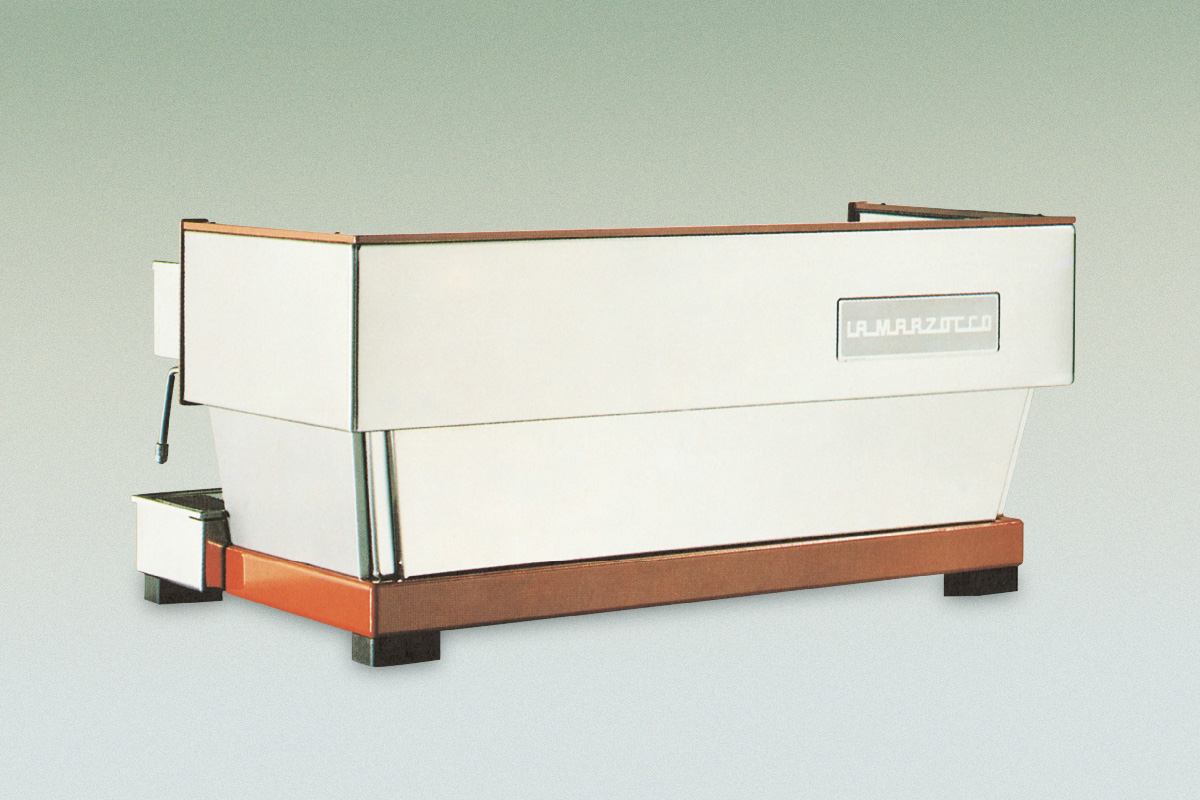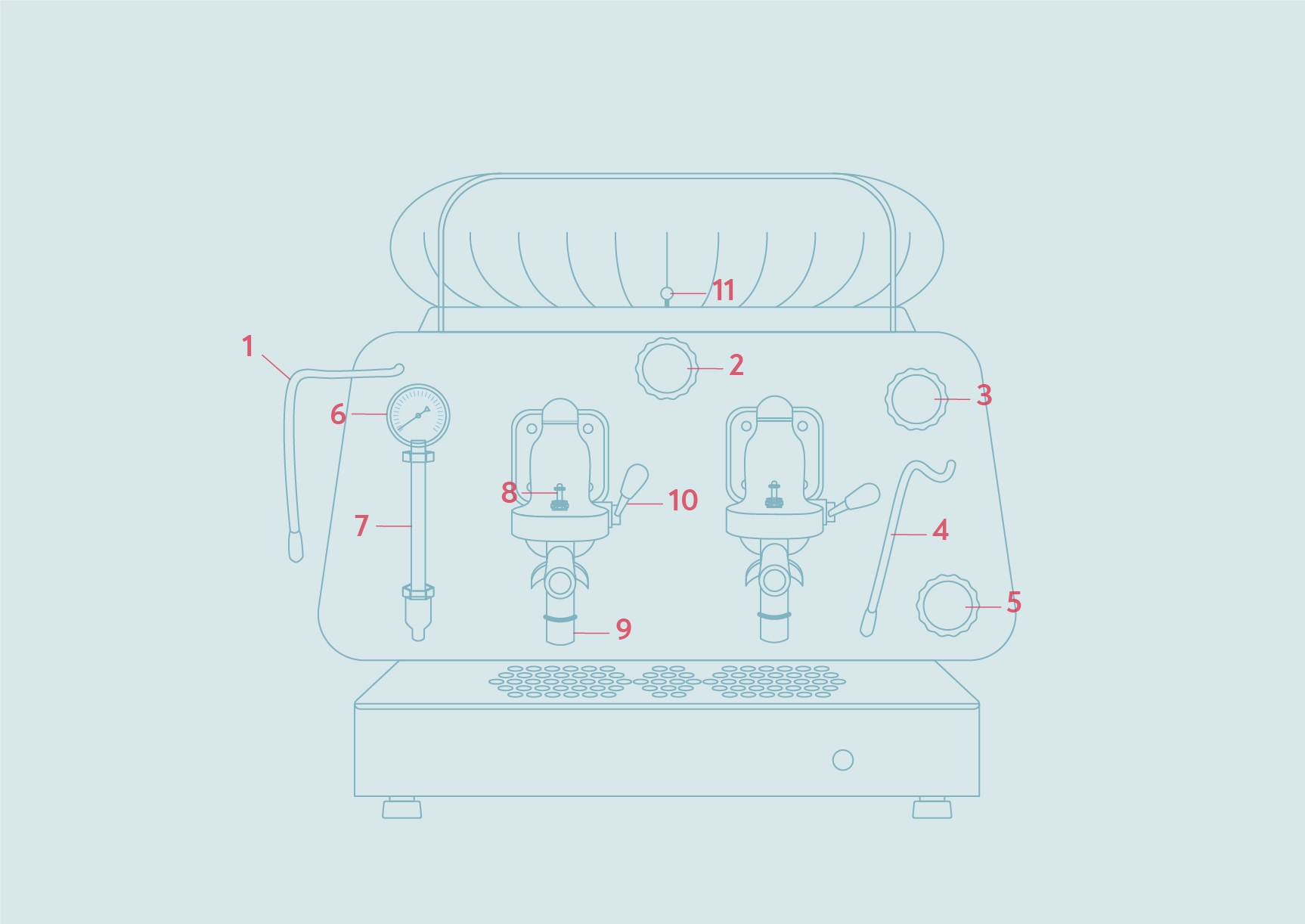 A dual boiler La Marzocco Linea from 1990.
A dual boiler La Marzocco Linea from 1990.
The espresso coffee culture was booming in the 1950s. In Britain particularly, coffee bars equipped with new machines and stylish, modern interiors provided a hint of continental sophistication that appealed to a youth culture emerging from wartime austerity. As cappuccino became increasingly in demand, so too was a reliable source of steam pressure to heat the milk. The idea of dedicating one boiler for brewing and a second one for steam dawned on the engineers at Faema. They attempted to manufacture a dual-boiler machine earlier than you might think.
The credit for the invention of dual-boiler technology is often misattributed. The most commercially successful dual-boiler machine has been the La Marzocco Linea, which was first released in 1990. Another important dual boiler design from La Marzocco was the GS machine released in 1970 — a major advancement, but not the first of its kind either. Here follows an account of the first dual-boiler machine.
The History and Anatomy of the TRR
In 1959, Faema launched a machine equipped with two boilers. One produced steam and a second produced hot water. This feature allowed baristas to adjust the temperature of the brew water and the steam pressure independently. Faema named the new machine Termo Riscaldamento Regolato (Italian for ‘adjustable thermal heating’), or TRR. About a year later the machine, because of its distinctive styling, became known as the Tartaruga (‘tortoise’). The Tartaruga featured several innovations. In the following section we explain its anatomy.
 An illustration from the patent that concerned Valente’s group head design used in the E61, and the TRR, from two years earlier.
An illustration from the patent that concerned Valente’s group head design used in the E61, and the TRR, from two years earlier.
- Steam wand
- Steam valve
- Valve that opens the hot water spigot
- Hot water spigot
- Valve that allows hot water to flow from the brew boiler to the steam boiler. This allows the coffee boiler to refill automatically.
